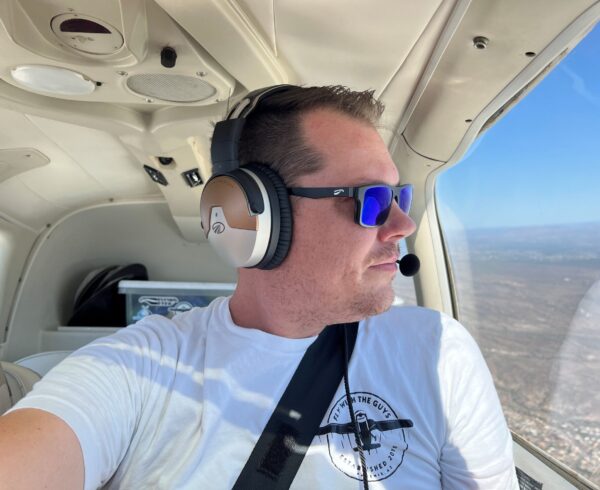The Grand Canyon has attracted people for twelve millennia, from Paleoindian hunter-gatherers during the last ice age through Puebloan civilizations a thousand years ago, the indigenous Southwest peoples, naturalists and explorers, and on to today’s visitors from around the world. But only in the last century have a few lucky visitors had the chance to experience the full scope and grandeur of North America’s largest canyon from the air. For our third installment of “Going There—the blog series where we present the how-to’s and highlights of flights to amazing places—we talked to pilot Josh Flowers, creator of the Aviation101 YouTube channel, about flying over the Grand Canyon and why this flight should be on every pilot’s bucket list.
At 277 miles long and up to 18 miles wide, the Grand Canyon is monumental, from its, sometimes, snow-capped rim to its mile-deep floor. Josh told us that, despite the allure of the Canyon, it took him some time to make the flight. “For the longest time I didn’t fly over the Grand Canyon because I was scared of not doing something right. But when I located the chart and started reading stuff, I realized that it was actually pretty simple.”
The 1,900 square miles of Grand Canyon National Park include six no-fly zones, set up to isolate the canyon’s wild inhabitants and park visitors from the noise of plane and helicopter tours and other aircraft. Aircraft must operate within designated flight corridors, so these areas can be busy. Despite that, Josh says, flying the Canyon is surprisingly straightforward. “Basically, for each of the areas around the canyon, the FAA procedure lays out a pair of altitudes that correspond to directions of flight, to keep aircraft separated. [Northbound aircraft must fly at 11,500 or 13,500 feet MSL and southbound at 10,500 or 12,500 feet MSL.] The purple zones on the FAA chart are no-fly zones. But there are corridors where you can fly between the zones—the Tuckup, Fossil Canyon, Dragon, and Zuni Point corridors—which just happen to be the most spectacular parts of the Grand Canyon. They did that on purpose, to allow pilots to fly over this great stuff.”
When you review the FAA chart and procedure for this area, pay attention to the communications rules. “Similar to the exclusion zone on the New York Hudson River Corridor, you have frequencies you need to monitor and use to make announcements. You announce as you head through one of the corridors and when you exit it. So, you can go through one corridor, turn and head through the next. You can just snake up and down the Grand Canyon. It’s much easier than a lot of people think.”
In addition to familiarizing yourself with the flight rules, Josh says you definitely want to watch weather and temporary flight restrictions from the FAA. Weather in the Grand Canyon can be extreme, and it can change quickly. In particular, late-summer monsoons can cause sudden thunderstorm activity. Josh warns, “If there’s cloud layer or convective activity that would prevent you from flying the route, it’s your responsibility as a pilot to know that. Do your research and know what’s going on in that area right now, such as temporary flight restrictions. Watch the weather, watch TFRs, and look for NOTAMs pertaining to that procedure.” (Depending where you’re flying when coming and going, also watch for defense-related flight restrictions along the U.S. border.)
For a taste of the Grand Canyon experience, check out Josh’s videos below of his Grand Canyon flights in a Cessna 172 Skyhawk and a Piper PA-28 Cherokee, with a bonus: a scenic landing at the sky-high airport perched atop a mesa in Sedona, Arizona.
If the Grand Canyon is on your piloting bucket list, there’s no reason to wait. As with any special flight rules area, Josh says the preparation for this flight is the key. “As always, the safety and integrity of the entire procedure is as good as the least prepared, proficient pilot there. If someone doesn’t know the rules or chooses not to obey the rules, that’s going to make it unsafe for everybody. So just take some time with a cup of coffee the morning of or the night before and read through the procedures to familiarize yourself, then give it a quick brief again before you take off.”
Many of the Pueblo peoples who lived in the Grand Canyon considered it sacred. (Heck, just watching Josh’s Grand Canyon footage is so serene and awe-inspiring, it could induce a state of higher consciousness for the rest of your day!) Even if you’ve visited the Canyon before on the ground, seeing it from the air is sure to give you a whole new perspective. As Josh said after his first flight: “My jaw’s on the floor. I’ll pick it up later.”















Leave a Comment